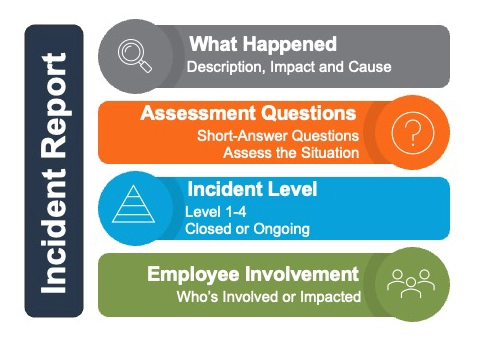
By Shelly Otenbaker, president, WayPoint Marketing Communications
“An ounce of prevention is worth a pound of cure.” Many are aware of this phrase, but few follow it. In manufacturing, taking small, proactive steps to prevent a problem is far more effective and less costly than dealing with the consequences once the problem occurs – especially when managing a crisis.
A business crisis is a situation that negatively impacts customers, employees and/or a company’s reputation. They come in all shapes and sizes, including organizational (e.g., acquisitions, cybersecurity, reorganizations), natural disasters, accidents and work stoppages.
The best way to mitigate the risk and minimize the negative impact of a crisis is to be prepared. Many manufacturers have people in environmental, health and safety roles who have developed a plan for the facility to manage a crisis, but few have established a communication plan.
A crisis communication plan helps ensure clear and consistent messages are conveyed during times of uncertainty or emergency. A well-structured plan helps to manage information flow, minimizing misinformation and reducing panic. It outlines the roles and responsibilities of key personnel, ensuring everyone knows their tasks and can swiftly act. This preparation helps maintain trust and credibility with stakeholders, including employees, customers, investors and the public.
Developing a crisis communication plan does not have to be overly complicated. But it does need to be a living plan that adjusts as the business changes, and it must define processes and action steps. Here are a few steps companies can take when developing an effective crisis communication plan.
Identify the Team
It is important to identify the employees that will support the plan because this will be the team responsible for managing and communicating during a crisis. When developing a team, think about the entire organization and the people who could be impacted by a crisis. It should include facility people – EHS, HR, plant leadership – as well as communications, legal and, potentially, the business owner.
If a company has multiple facilities, the team may need to expand to a head of the region or the corporate team. Having a pre-identified and trained team ensures all members know their roles and will help improve response time and effectiveness.
Create a Response Protocol
The response protocol is a step-by-step guide to guide the organization through a crisis and should contain several key tools.
First, the crisis team should brainstorm the type of crises the organization could face. This should be realistic but include scenarios that are not highly likely – before 2020, it is doubtful an organization had a pandemic in its crisis plan.
Additionally, the team should create crisis levels and the criteria that define each level. For example:
The levels should include general categories, align specifically to the business, cover all facets of the organization and increase in severity.
The next important tool is an incident report or some sort of mechanism to collect important data related to the crisis, such as what happened or is happening, who is involved and impacted, whether it’s an isolated/one-time incident or ongoing and any details related to the situation. Having access to correct information will be critical to an organization’s crisis response team’s ability to make informed decisions.
Next, an organization must define how to respond to different types of crises. An organization should ask: How will communication happen? Who initiates it and when does it start? What are the appropriate action steps based on the crisis levels and timing – immediate, first 12 hours, 24 hours and beyond? What communication tools will be used and what are the expected milestones?

Develop Communication Materials
During a crisis, every second counts so it is helpful to have materials or templates created and easily accessible to be utilized by the crisis team as needed.
- Key messages: Predefined messages about what the company does, what makes it unique and its values and priorities.
- Facility statistics: Information about all facilities – size, number of employees, products produced, etc.
- Scenario-specific messaging: Established messaging targeted at high-priority stakeholders (e.g., employees, customers) for specific scenarios that could occur within the facility.
- Contact lists: Create a list of names, emails and phone numbers for key stakeholders – employees (and emergency contacts), customers, emergency services and local media outlets.
- Spokespeople: Identify and train a small group of people who are tasked to communicate with employees, customers and media during a crisis.
- Communication tools: Identify and prepare tools that will be utilized to communicate during a crisis. Remember crisis teams may not always be able to utilize their facilities or traditional communication tools for all crises (e.g., loss of power, cell service).
Practice Makes Perfect
Although there is no perfect outcome when it comes to a crisis, companies regularly should conduct drills and simulation exercises to test the effectiveness of their crisis communication plan. Creating different scenarios and running through them allows a team to practice roles and refine the plan based on lessons learned.
Finally, a crisis communication plan should be dynamic and responsive to changes in the organization and its environment. Regularly review and update the plan to reflect new employees, risks, stakeholders and communication technologies.
A crisis communication plan can significantly impact the overall outcome of a crisis. Anyone who has endured a crisis without a plan will share that it often can be chaotic and extremely stressful.
By having predetermined strategies and communication channels, organizations can address concerns, provide necessary updates and demonstrate control over the situation. This proactive approach not only protects the organization’s reputation but also reassures stakeholders the organization is competent and prepared to handle adverse situations.
Shelly Otenbaker is the president of WayPoint Marketing Communications, a leading business-to-business marketing communications agency focused on helping manufacturers attract and retain talent and acquire new business. The company specializes in building customized, strategic programs tailored to meet the unique needs of each client.
More information: www.waypointmc.com
Reprinted with permissions from Plastics Business (www.plasticsbusinessmag.com).


